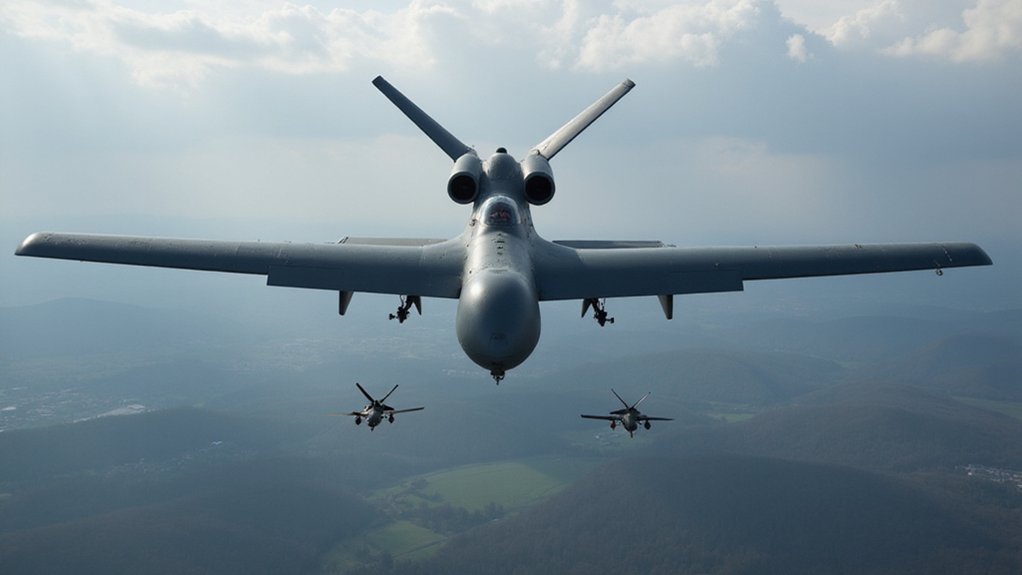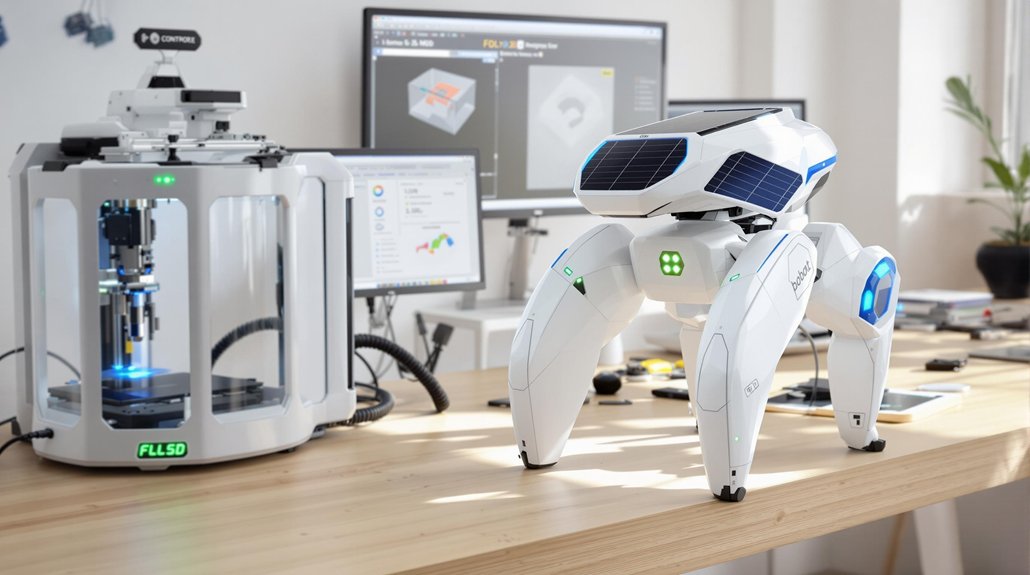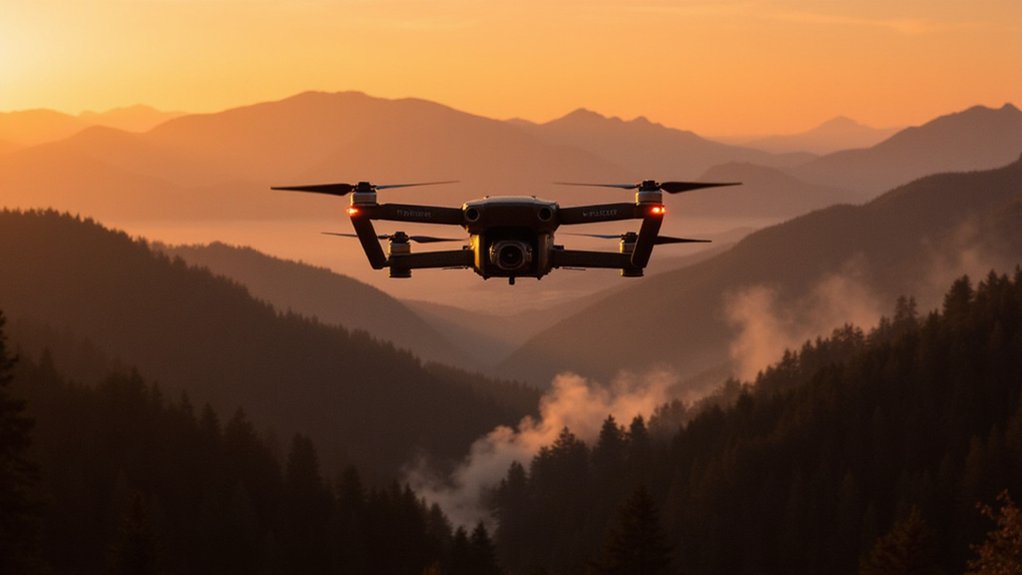Ukraine just changed the game. Their new GOGOL-M mother drone isn’t playing around—it’s an AI-powered platform that delivers death from 300 kilometers away. This isn’t your grandfather’s warfare.
The system works like something out of science fiction. A mother drone flies deep into enemy territory, carrying two smaller FPV attack drones. Once in position, it releases these killers, which then hunt and destroy targets completely on their own. No human pilot needed. The AI identifies enemy aircraft, infrastructure, whatever—and takes them out. Welcome to the future, folks.
AI-powered drones hunting targets autonomously—no human pilot needed, just pure algorithmic destruction.
What makes this particularly nasty is the SmartPilot technology. It doesn’t need GPS, which Russia loves to jam. Instead, it uses visual navigation and LIDAR to find its way around. The drones can even land, hide, and wait to ambush moving targets later. That’s right—robot assassins that set traps.
The numbers are staggering. Ukraine can pump out 50 mother drones and 400 attack drones every month. Each mission runs about $10,000, which is pocket change compared to traditional missiles that cost 300 to 500 times more. It’s like comparing a Honda Civic to a Ferrari—except both can blow up your tank.
This changes everything on the battlefield. Russia’s air defenses were built to stop big, expensive missiles, not swarms of cheap, smart drones that think for themselves. The mother drone can even fly back home if the mission is within 100 kilometers, ready for another run. Talk about getting your money’s worth.
The software isn’t limited to flying machines either. Ukraine can slap this AI brain onto boats, ground vehicles, whatever moves. It’s modular, flexible, and absolutely terrifying if you’re on the receiving end. Despite its military advantages, this technology raises serious ethical concerns regarding autonomous weapons systems and their implications for future conflicts. And they’re not stopping there—Ukraine has also developed the Sky Sentinel, an autonomous turret that shoots down incoming drones without any human pulling the trigger.
Version 1.0 is already operational on the battlefield. While the U.S. and China are still talking about autonomous swarm concepts, Ukraine is actually using them to blow stuff up. Sometimes necessity really is the mother of invention—or in this case, the mother of autonomous killing machines. The technology was developed by Ukraine’s defense innovation cluster Brave1, which is rapidly turning cutting-edge concepts into battlefield reality.
The future of warfare isn’t coming. It’s here, and it costs less than a used car.
References
- https://www.kyivpost.com/analysis/53546
- https://unn.ua/en/news/the-effectiveness-of-strikes-is-increasing-a-new-technology-in-the-armed-forces-an-ai-based-drone-mother-is-already-destroying-invaders
- https://www.ukrinform.net/rubric-ato/3998464-ukraine-deploys-aipowered-mother-drone-for-first-time.html
- https://www.twz.com/air/watch-a-ukrainian-uncrewed-aerial-mothership-launch-kamikaze-drones
- https://united24media.com/latest-news/ukraine-reportedly-deploys-ai-drone-motherships-in-first-autonomous-combat-strikes-on-russia-8696









